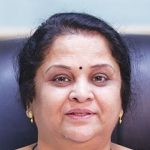
Breaking the glass ceiling: Women have made come a long way in the last 100 years or so, and have occupied positions like heads of state, and the chief executives of some of the most powerful corporations. Despite all such achievements, women in all walks of life still feel invisible barriers when they try to make a space for themselves in the male-dominated world. While it is true that a large number of women overcame these obstacles to reach the very top, a larger number may have fallen victims. As the world commemorates the International Women’s Day, it is important to discuss the experience of women who make it to the top.
I joined the Indian Administrative Service in 1982. Right during the probation days, it was made clear to me that I was not just a woman, but an officer. That set the tone for my career as I went on to occupy some positions that were exclusive domains of men. As IAS officers, we were taught the difference between gaining access and just having access, so that we could work without inhibitions. When I look back at my postings, I feel that as a woman I had to work harder that my male contemporaries. This article is an account of my experience in the male bastion of Indian Administrative Service.
READ I Women’s empowerment key to India’s transformation
Think different, act with passion
I could establish myself as a successful officer through systemic approach, holistic planning, and execution of convergence concept. Many of these concepts were replicated at national and international levels. Convergence concept found its way into the 10th plan document and emerged as a major policy implementation guideline from 11th plan onwards and for NITI Aayog. The system approach found its way into the development of the Common Household Database (SAMAGRA), currently adopted by eight states in the country. The holistic approach made its way to the Steel Policy 2017. The holistic approach helped the steel industry recover after the lifting of the lockdown.
For young lady civil servants, it is very important to overcome the limitations imposed by the society on women to move ahead in their career. For a woman to reach the top, she needs to multitask, think futuristically, and handle crises with a touch of empathy.
During my stint as collector in one of the most communally sensitive districts in the country, the task was to establish the connect with people. My strategy was to do so through developmental efforts and sports. Panchayats were encouraged to take up infrastructure work on priority, ensure drinking water 24×7, provide livelihood by enhancing productivity, and eradication of guinea worm. Before the implementation of the Panchayati Raj law, it was a difficult task to ensure flow of funds to panchayats. We managed to connect with the youth by organizing sports events in every village. The administration chose kabaddi, kho kho, football, throw ball and sprinting, which required just a good ground, and not much funds.
READ I Empowerment of women: Achieving sustainable development goal 5
All these games have high level of spectator involvement. The games were conducted by school principals, assisted by the patwari, the village revenue official. A constable assisted them to arrange travel of the winners to block and district level games. Through this, the police and revenue officials established a connect with local youth. My three years as district collector were marked by communal harmony. Connecting with stakeholders is the best way for a woman officer to establish herself in the initial stages of her career.
Making the connect to break the glass ceiling
In civil service, the name of the game is system corrections. Early in my career, I had to deal with a crisis in the dairy industry. I just had to help the stakeholders come up with ideas, and each one of them did their best to resolve the crisis. I just had to screen their ideas, debate and execute.
In the government system, a large number of agencies are involved in developmental efforts and this has resulted in resources being thinly spread and huge amounts wasted due to duplication of efforts or in reinventing the wheel. The challenge was of optimise the use of resources at the district level by merging schemes with similar objectives and beneficiaries, I mooted this idea of convergence in an article titled Ensuring Better Execution of Schemes (December 31, 1992 issue), in Yojana, a monthly magazine un by the government.
Later, I wrote extensively on the subject based on my experience in national and international journals. I also made a presentation at a UNDP workshop for stakeholders in 2003-04. Later I published a detailed account of my experience in my book Resource Convergence Mantra.
READ I India’s fledgling e-commerce industry needs a robust policy framework
Development of a strong and open regulatory framework to use unified data under SAMAGRA for planning purposes is critically important to ensure transparency and accountability. While participation in Aadhaar scheme is legally voluntary, SAMAGRA registration is mandatory for receiving social protection payments, and hence integration of these two powerful levers made Aadhaar effectively obligatory. This increases the need to strengthen data-protection guidelines, and to establish complaints procedures and other accountability mechanisms to protect civil liberties. SAMAGRA has also been instrumental in the establishment of common scholarship portal. Currently, I am streamlining the concept of ‘holistic approach’ to policy making in multiple government departments.
My administrative career has been a wonderful experience except, sans a mess created by some officers during my tenure as the director general at Doordarshan. Despite the problems, DD managed to implement a revenue model that helped it break even in two years. It managed to deliver quality broadcasting for the Commonwealth Games and built a technically savvy team to implement complicated assignments. DD was the first broadcaster to bring high-definition TV in the country. Proper procedure and perfect paper work are needed to keep trouble at bay while executing sensitive missions.
READ I TechFins: Why India must stop their unregulated, untaxed run
Despite my 24×7 job with the government of India, I invested some time and energy in my personal life. I spent some time pruning my skills as a Kathak dancer, and in gardening and cooking. During the lockdown, I came up with a menu of 365 days of the year. MyMenu365 answers all the queries haunting an average Indian. Is my diet healthy, is it good for my tummy, what is its calory value, and will it be liked by my family and friends? MyMenu365 is a unique concept based on my concept of holistic thinking.
Young women in civil service and senior management in private sector may find my experience useful. My career is an illustration of how working with passion and without personal agenda and malice could help a woman succeed in male bastions. You overcome the initial challenges in your career, and the progress will be smoother in later stages. Ensure that there is some work-life balance and that you spend enough time picking up survival skills on the job.
(Aruna Sharma is a New Delhi-based development economist. She retired as a secretary with the government of India.)
Dr Aruna Sharma is a New Delhi-based development economist. She is a 1982-batch Indian Administrative Service officer. She retired as steel secretary in 2018.

